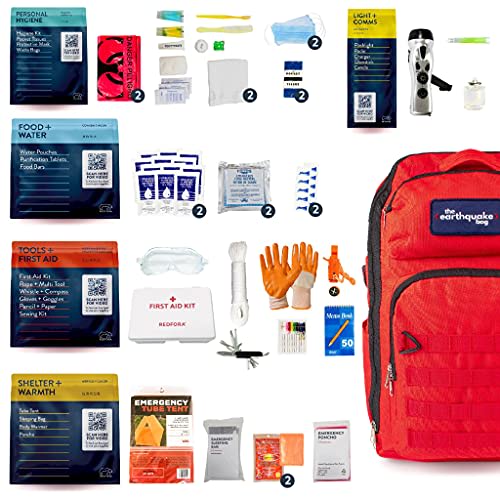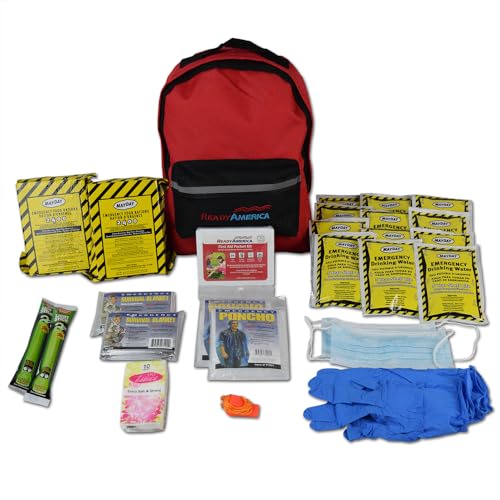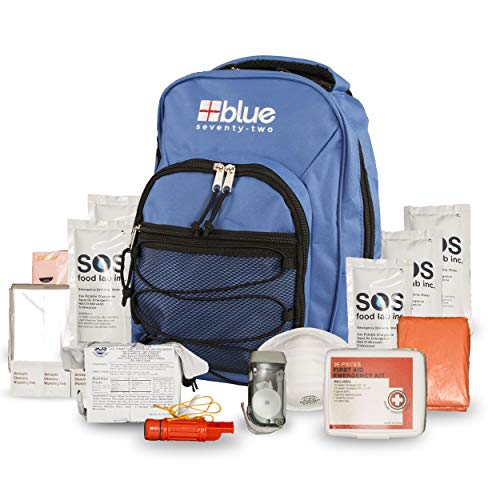Could you survive off of your own food, water and other supplies for a few days if you needed to? That’s the definition of “emergency preparedness,” according to the U.S. Department of Homeland Security’s Ready.gov.
For many people, emergency preparedness looks like, among other things, having a stocked emergency kit in the house. An emergency kit — sometimes called a survival kit — can help you be prepared in case of a natural disaster like an earthquake, wildfire, tornado or flood.
69% of Americans have assembled some kind of emergency supplies according to a 2024 Federal Emergency Management Agency (FEMA) study. If you’re not one of them, what are you waiting for? We collected guidance from government agencies like FEMA and the CDC about what to put in an emergency kit and recommend some top-rated kits and supplies below.
Selected.
Show 0 More
Show Less
How we picked top-rated emergency kits and supplies
Using guidance from reputable agencies like the Federal Emergency Management Agency (FEMA), the Centers for Diseases Control and Prevention (CDC) and the American Red Cross, we selected emergency kits based on the following criteria:
Supplies included: All of the above organizations suggest an emergency kit that includes some variation of the following:
- First aid: suitable to the size and medical need of your family
- Sustenance: water (one gallon per person per day) and non-perishable food that can last several days
- Hygiene: moist towelettes and garbage bags
- Light: flashlight
- Shelter: plastic sheeting and emergency blankets
- Communication: whistles, a battery-powered or hand-crank radio (with NOAA Weather Radio, if possible), cell phone and cell phone charging cables
- Tools: disposable batteries, duct tape, multitool or wrench, can-opener (if kit contains canned food) and local maps
- Protection: N95 masks
Household size: Emergency kits are designed for a specific number of people. We included pre-built options for households ranging from one to four people.
Top-rated: We only selected pre-made kits with at least a four star rating on the brand or retailer sites.
The best emergency kits of 2025
These top-rated emergency kits have most of the supplies recommended by FEMA, the CDC and The American Red Cross. You can also supplement them with supplies of your own.
Best overall
This three-day emergency kit includes a variety of agency-recommended items like a hand-crank radio, first-aid kit and multiple water pouches, plus some additional nice-to-haves, like water purification tablets, nylon rope, a sewing kit, a candle and hand warmers. The supplies are labeled and color-coated in bags that have a QR code that you can scan to find out more about how to use them, according to the brand. Everything comes in a red backpack, and the two-person version (linked above) weighs about 18 pounds.
You can read a full list of the included supplies on Redfora’s website. This emergency kit doesn’t have all of the recommended shelter and communication supplies mentioned above, so you may want to supplement it with things like plastic sheeting, batteries, charging tools and local maps.
Best budget
This emergency kit has fewer supplies than our top pick but costs significantly less. It’s a good starting point to build a larger kit, and it’s small enough to fit into a larger emergency pack. Highlights include twelve 4.2 ounces water pouches, two 12-hour emergency lightsticks and two survival blankets. You can read a full list of the included supplies on Ready America’s website.
Best for one person
A one-person emergency kit is great for individuals or as a small backup option to keep in places like cars, boats or your place of work. This one-person kit is lightweight at just under five pounds, and comes in a blue backpack that has a mesh outer pocket that’s a good fit for stuffing things like clothes or blankets. Inside, it has key supplies like water pouches, a first-aid kit, and a crank-powered flashlight. (You can read the full list of included supplies on Blue Coolers’ website.)
Top-rated emergency supplies of 2025
It’s always a good idea to supplement a pre-built survival kit with other tools and supplies specific to your environment and needs. Or you might want to build a personalized go-bag from scratch. Either way, we selected highly rated first aid, hygiene, light source, shelter, communication and protection supplies fit for any emergency kit.
First-aid kits
A first-aid kit should include a variety of supplies for treating wounds and injuries. You should add personal items like medications and emergency contacts, according to the American Red Cross.
Water
FEMA recommends a three-day supply of nonperishable food and water in any disaster kit. Water in particular can be tricky — while it is easy to store, it is heavy to carry with you in the case of an evacuation. Below are a few top-rated water storage and water filtration supplies that may fit your needs.
Whistles
Whistles can get incredibly loud with a lot less effort on your part than shouting or yelling. If you’re in distress and need help, blow a whistle three times — three of anything in a repeating sequence is known to be an international sign of distress (SOS), according to the Utah Department of Public Safety.
Flashlights
A flashlight is critical if your power is out and you need to get around safely in the dark.
Batteries and portable chargers
Most flashlights (and some radios) are powered by disposable AA or AAA batteries, and Ready.gov recommends storing a few extras in your emergency kit. Portable chargers and backup power stations can also be useful in case of a blackout.
Radio with NOAA Weather Radio tone alert
A radio is a good way to get updates on the disaster, including any known safety risks, according to FEMA.
Sleeping bags
Maintaining your body temperature in hot or cold weather is vital for survival, according to the Utah Department of Public Safety. A sleeping bag can help you stay warm in cold conditions and you can typically roll it into a smaller size so it can easily fit into an emergency bag. You can learn more in our sleeping bags guide.
Face masks
The American Red Cross recommends putting N95 or surgical masks in your emergency kit, depending on the types of disasters common to your area.
Personal Hygiene
If you don’t have access to running clean water or soap, you can use moist towelettes and hand wipes to clean and sanitize.
Tools and Shelter
The right tools and shelter can make it easier to shut off damaged household utilities (in case of downed wires, for example), open canned food and shelter in place.
Maps and navigation
Ready.gov recommends any basic disaster supply kit have maps of your area. You can buy local maps online or print out maps at home using tools like the U.S. Geological Survey national map viewer.
If you don’t have a GPS device, a manual compass is also essential for map navigation.
Cell phone, personal documents, extra cash
The American Red Cross recommends packing a cell phone, personal documents like medication lists, proof of address, passports, extra cash and more. What this looks like in practice depends on your household and needs. Either way, it can be useful to store said documents in a fireproof document bag. Here’s what else to know about storing your documents safely.
Frequently asked questions
What do you need for a 72-hour emergency kit?
Ready.gov and the American Red Cross have similar recommendations as it pertains to what’s needed for a 72-hour emergency kit. We combined recommendations from government agencies to create this list of essentials.
Both organizations also list supplemental emergency supplies that may be useful, including:
- Prescription medications (three-day supply) and medical items
- Non-prescription medications such as pain relievers, anti-diarrhea, antacids or laxatives
- Prescription eyeglasses and contact lens solution
- Infant supplies
- Pet food and water
- Extra cash
- Copies of personal documents (medication list and pertinent medical information, proof of address, deed/lease to home, passports, birth certificates, insurance policies)
- Sleeping bags
- Towels
- Climate-appropriate change of clothes and shoes
- Work gloves
- Scissors
- Fire extinguishers
- Menstrual supplies
- Set of dishes and utensils
- Paper and pencils
- Entertainment (books, games, puzzles, etc.)
Is it cheaper to build your own emergency kit?
It can be, depending on your needs. A lot of the most recommended items in an emergency kit are things you already have in your home: non-perishable food, water, batteries, tools, spare clothes, first-aid supplies, etc. You could start an emergency kit by putting supplies you already have in a bag, then shop for anything you’re missing.
Where should I store my emergency kit?
Ready.gov recommends storing your emergency kit items in airtight plastic bags, then putting them in something that’s easy to carry like a duffel bag or plastic bin.
Why trust NBC Select?
I’m a reporter at NBC Select who covers technology and fitness including recent stories on air purifiers, wireless earbuds, and walking shoes. For this piece, I researched emergency preparation guidelines from reputable agencies like FEMA, the CDC and the American Red Cross.
Catch up on NBC Select’s in-depth coverage of tech and tools, wellness and more, and follow us on Facebook, Instagram, Twitter and TikTok to stay up to date.


